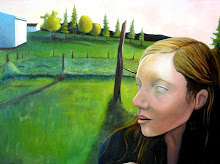 Indeed he was. Or at least his parents were. His father eventually got read out of meeting, and there is no evidence to suggest that Daniel adhered to the Quaker faith, or that he gave much thought to religion in general. However, the meeting house where the Boones worshiped was about a mile down the road from their farm. The meeting house that I visited on Tuesday would not be the one that the Boones frequented. They probably worshiped in a log structure. This meeting house was built after the Boones had already left the area.
Indeed he was. Or at least his parents were. His father eventually got read out of meeting, and there is no evidence to suggest that Daniel adhered to the Quaker faith, or that he gave much thought to religion in general. However, the meeting house where the Boones worshiped was about a mile down the road from their farm. The meeting house that I visited on Tuesday would not be the one that the Boones frequented. They probably worshiped in a log structure. This meeting house was built after the Boones had already left the area.
The Exeter Friends Meeting House was built in 1757, although the first Quakers came to the
What I found when we got inside the building didn’t surprise me. The walls, pews, everything was very plain. None of the wood was painted. The plaster walls were white. Nearly everything in the house was original. The benches were made in 1757, and I relished being able to sit on furniture that old. (Just try doing that in any museum!) The only signs of modernity were the electric lights, pamphlets, and some art projects left on a bench that children had been working on. They were collages that were drawn and decorated with words like “peace,” “simplicity,” and “the I have a dream speech.” Jim talked to us for about a half an hour and I learned quite a bit about the Quakers in that span of time. He talked about the Quaker marriage ceremony, the church structure, the way meetings progress, and he gave us a brief overview of Quaker history.But what really caught my attention was when he started talking about the Quaker church organization.
Jim explained that in the eighteenth century the Quaker churches were organized very differently from the German Lutheran and Reformed churches that were in the area, mainly because the German Lutheran and Reformed churches consisted of several leaderless congregations that were not organized at all. The Quakers however, assigned each meeting to a regional meeting that met once a month to discuss the business, changes, ideas, and day- to- day concerns of the churches. It was here that decisions were made about marriages, expulsions, transfer certificates, etc. I was surprised to hear about this apparent organization within the Quaker church because I had read for so long about how disorganized other religious groups in


No comments:
Post a Comment